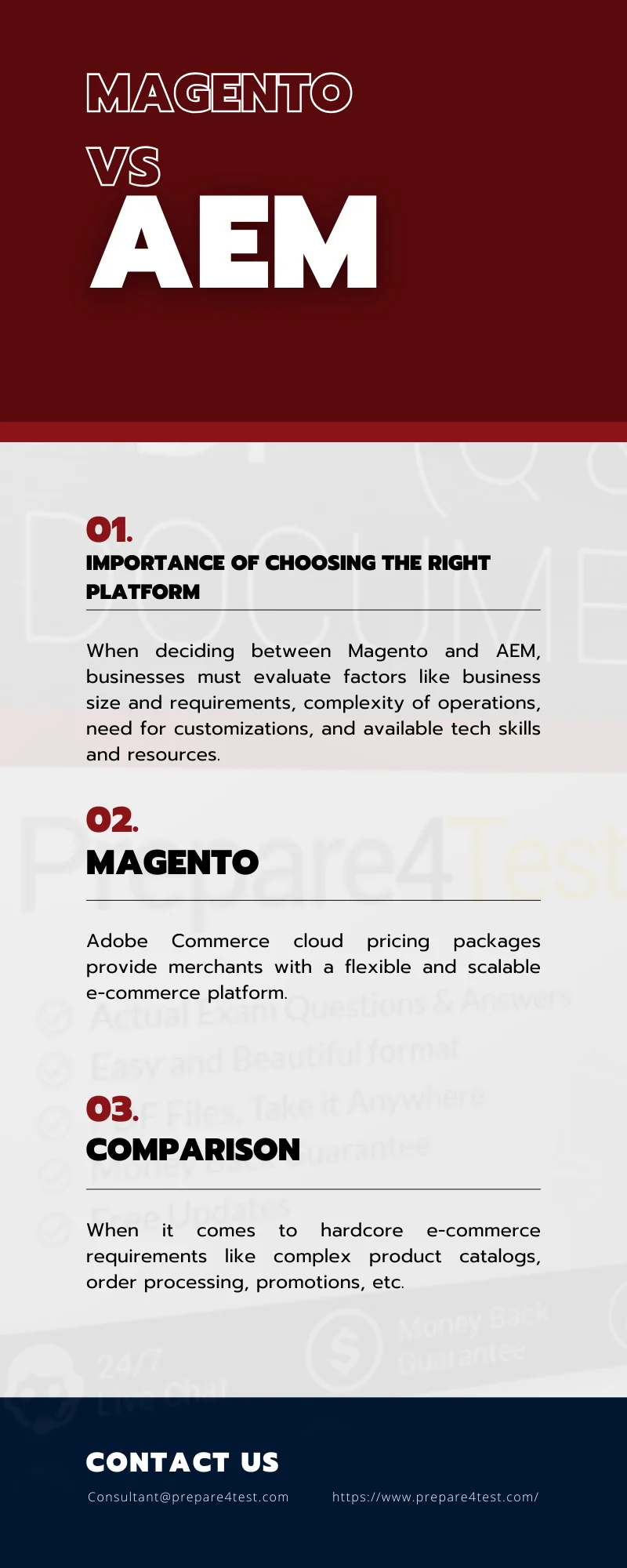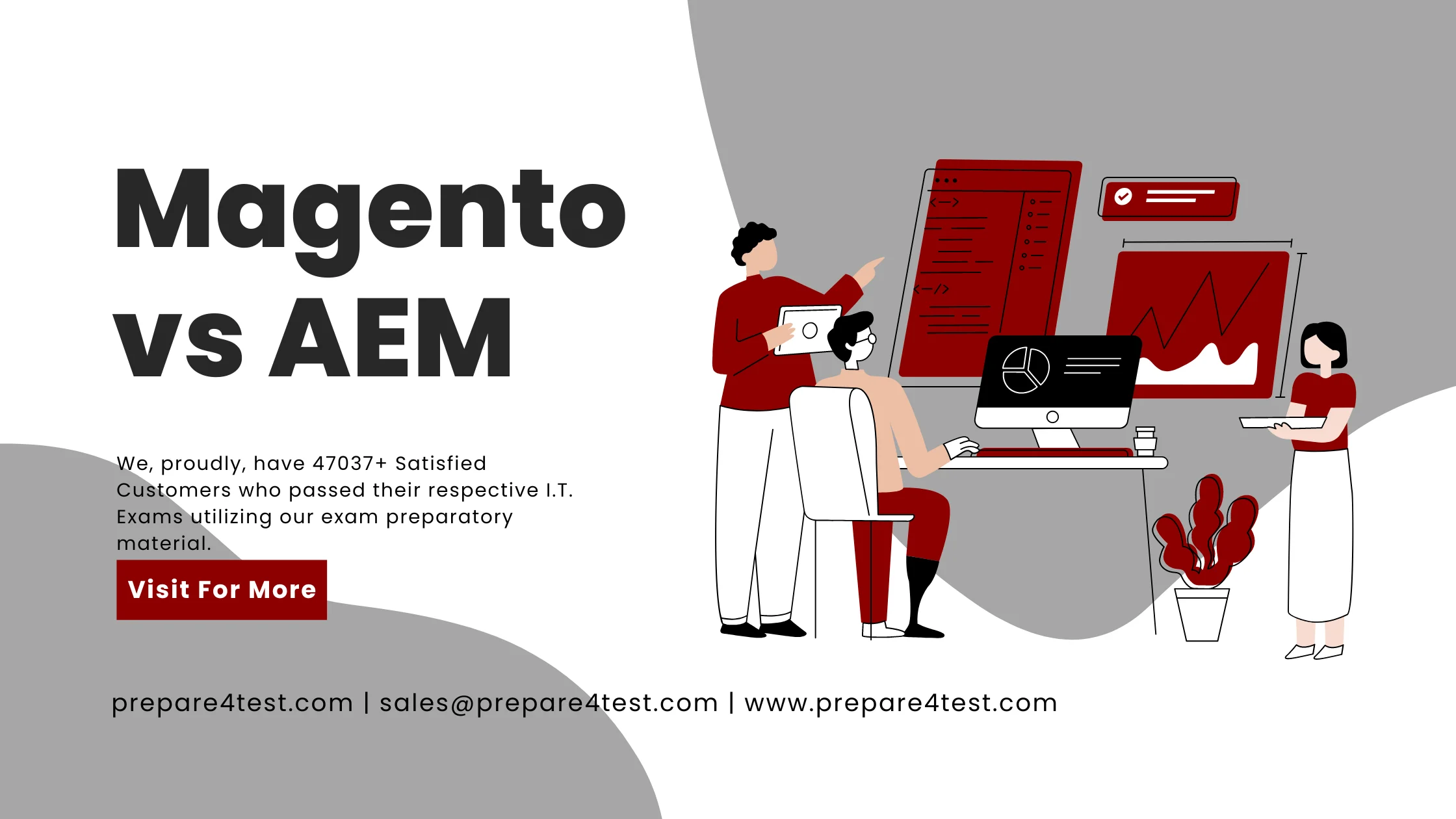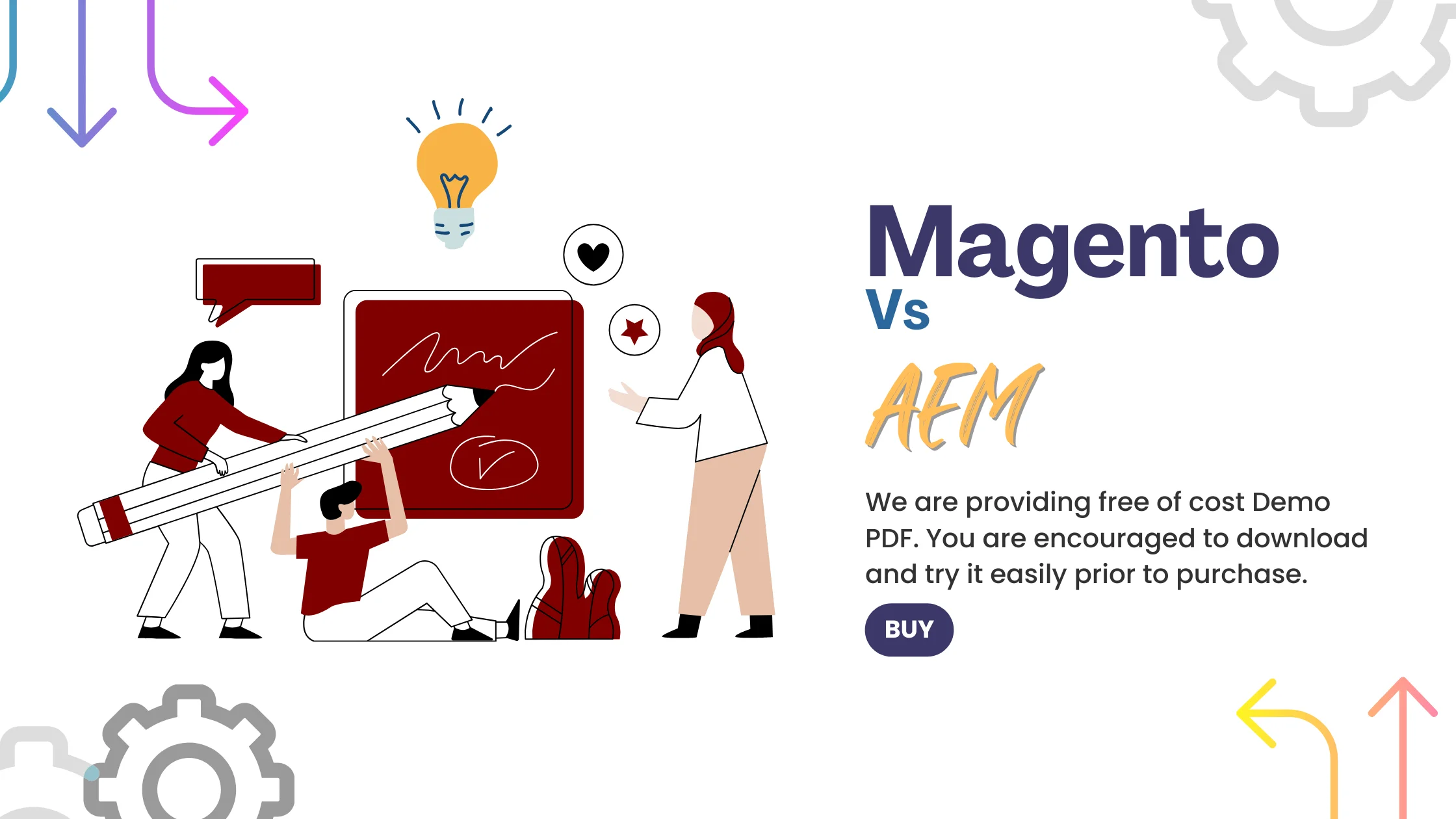
With the rise of e-commerce, having the right that allows the building and management of an online store is crucial for business success. Two of the most popular e-commerce platforms are Magento vs AEM.
This post provides a brief overview of both platforms and discusses the importance of selecting the right one based on business needs.
Magento is an e-commerce platform, which is developed using PHP and is open-source. It offers merchants a high level of flexibility and control to customize online stores as per their requirements.
Magento is scalable, has a vast module ecosystem, and supports omni-channel commerce. It is suitable for small, medium and large businesses.
On the other hand, AEM is an enterprise-grade content management system with robust digital asset management capabilities. It allows creating and managing content seamlessly across channels.
AEM helps deliver personalized omnichannel experiences through content targeting and testing tools. It is more suitable for large enterprises and global brands.
Importance of Choosing the Right Platform

When deciding between Magento and AEM, businesses must evaluate factors like business size and requirements, complexity of operations, need for customizations, and available tech skills and resources.
While Magento offers more e-commerce specific features out of the box, AEM excels at managing large volumes of content and media assets.
Carefully examining all these parameters will ensure brands pick the platform that aligns best with their business goals and capabilities. The right choice of technology foundation is imperative for long-term e-commerce success.
With their respective strengths, Magento and AEM both enable brands to provide engaging customer experiences across touchpoints.
Adobe Commerce, formerly known as Magento Commerce, and Adobe Experience Manager (AEM) are both robust platforms for e-commerce websites.
While Commerce focuses on storefront capabilities, AEM excels at content management. This article discusses the key features and strengths of both platforms.
Features and Capabilities
Magento
As an open-source e-commerce platform, Adobe Commerce offers unmatched flexibility and scalability for online stores. Its key features include:
- Flexible catalog and product management with powerful admin dashboards
- Sophisticated promotions engine and merchandising tools
- Effortless integration with payment gateways and shipping carriers
- Powerful SEO and marketing capabilities for customer acquisition
- Omnichannel order management across channels
- Scalable architecture to support growing catalog sizes and traffic
With these commerce-focused capabilities, Adobe Commerce empowers merchants of all sizes to deliver personalized shopping experiences across touchpoints. Its strengths lie in enabling robust online storefronts, complex promotions, and streamlined order fulfillment.
AEM
AEM is an enterprise-grade CMS with rich digital asset management capabilities. Its major features are:
- Intuitive authoring environment for content creators
- Tools for planning, creation, and distribution of content
- Integrated asset library for managing rich media
- Content targeting and personalization capabilities
- Testing and optimization features
- Scalability to manage large content volumes
With these features, AEM makes it easy for large brands to orchestrate omnichannel content campaigns. Its key strengths are in streamlining content workflows, providing impactful experiences across channels, and optimizing content performance.
While Commerce focuses on storefront functionality, AEM complements it by managing content at scale and delivering personalized omnichannel experiences. Together, they enable brands to accelerate their e-commerce and digital marketing strategies.
Comparison of E-commerce Capabilities
Magento
Adobe Commerce cloud pricing packages provide merchants with a flexible and scalable e-commerce platform. Its storefront and shopping cart capabilities include:
- Building online stores with custom themes/layouts
- Managing complex catalog and inventory
- Offering flexible promotion rules and coupons
- Integrating various payment gateways
- Shipping integration with carriers
- Powerful SEO and marketing features
With these robust functionalities tailored for e-commerce, Magento empowers brands to rapidly grow their online business.
AEM
While AEM is primarily a content management system, it also offers some e-commerce features like:
- Authoring product pages with rich media
- Creating basic product catalogs
- Enabling simple promotions
- Integration with payment services
- Managing orders
However, AEM has limited native storefront and shopping cart capabilities compared to Magento. It is more focused on managing omnichannel content.
Comparison
When it comes to hardcore e-commerce requirements like complex product catalogs, order processing, promotions, etc. Magento is far more comprehensive. With its array of storefront and order management capabilities, it is the platform of choice for serious e-commerce merchants. AEM complements it by orchestrating omnichannel content campaigns.
Comparison of Content Management Capabilities
Magento
Adobe commerce 2.4 6 offers merchants the ability to build and manage online store content using its admin panel and theming capabilities. Key features include:
- Authoring product descriptions, categories, images etc.
- Creating static content pages with WYSIWYG editor
- Basic theming to customize storefront design
- Managing multiple store views
- Rudimentary translation workflow
While useful for basic commerce content needs, Magento has limitations when managing large volumes of rich media assets and omnichannel content.
AEM
AEM is designed as an enterprise-grade CMS with advanced content authoring and distribution features such as:
- Intuitive authoring environment and workflows
- Powerful asset management with metadata support
- Content targeting and testing capabilities
- Seamless integration across channels
- Scalability to manage exponential content growth
With these specialized features, AEM enables brands to deliver impactful omnichannel experiences.
Comparison
When it comes to hardcore content management needs, AEM is far more robust and scalable. Magento offers only basic commerce content capabilities, while AEM is built ground-up as an enterprise CMS.
For brands managing thousands of rich media assets and distributing content across channels, AEM is the platform of choice. Magento store owners can complement their product content with AEM’s superior content production environment.
So merchants looking to accelerate omnichannel content campaigns are better served by integrating AEM with Adobe Commerce storefronts. This allows focusing specialized platforms on their core strengths – commerce and content.
Integration and Customization Options
Magento
As an open-source platform built on PHP, Adobe commerce headless offers immense flexibility for integration and customization. Key options include:
- REST and GraphQL APIs for headless commerce
- Extensive module ecosystem to extend functionalities
- Theming and layout customization capabilities
- Ability to customize business logic, models, controllers etc.
- Options for cloud deployment and infrastructure automation
With its modular architecture and developer-friendly code base, Magento can be deeply customized to address complex business needs.
AEM
AEM also provides extensive integration touchpoints and customization options such as:
- APIs and microservices for headless content delivery
- Integrating with external data sources and services
- UI personalization and component customization
- Custom workflows and business logic via OSGi services
- Options for cloud infrastructure management
As an enterprise Java platform, AEM enables brands to customize experiences while maintaining upgrade compatibility.
Comparison
Both Magento and AEM provide ample integration APIs and customization features at the presentation layer and business logic layer. Magento’s PHP code base allows more flexible low-level customizations. AEM offers robust content delivery APIs.
For brands needing deep custom e-commerce logic, Magento provides more options. For content reuse across channels, AEM’s headless APIs excel. Using both platforms together provides the best of both worlds.
So a customized integration of AEM’s content capabilities into Adobe Commerce stores enables optimal experience delivery across touchpoints.
Pricing and Support
Magento
Adobe cloud commerce pricing is based on the specific edition – open source, Adobe Commerce (on-premises), or Adobe Commerce (cloud). The open source edition is free but has limited support. Adobe Commerce paid licenses start at $22,000 per year with additional cloud infrastructure fees. Support options include:
- Community forums and documentation for open source edition
- Standard or premium support packages from Adobe for Commerce editions
AEM
AEM is licensed based on number of CPU cores used. Full AEM licenses cost around $450 per core annually. Additional fees apply for add-ons, cloud infrastructure usage, and managed services. Support options include:
- Developer community forums
- Standard or premium technical support and consulting from Adobe
Comparison
The open source Magento edition provides an extremely cost-effective platform, but has limited support. Hosted Adobe Commerce plans allow merchants to minimize infrastructure costs. But overall, AEM’s licensing model appears more expensive for larger deployments.
However, AEM specializes in enterprise-grade content management capabilities – which come at a premium. For advanced content needs, AEM delivers higher ROI despite the pricing. Magento editions are designed for mid-market ecommerce use cases. So pricing correlates accordingly.
When integrated together, merchants can optimize spending by using Magento for core commerce capabilities and AEM for content features. This balances cost and support based on each platform’s strengths – with Adobe providing integrated technical support.
Conclusion
When it comes to Magento vs AEM, both platforms have unique strengths that enable brands to accelerate their e-commerce and digital experience strategies.
Magento offers unmatched capabilities when it comes to building online stores with flexible promotion engines, seamless order fulfillment across channels, and data-driven merchandising. Its scalable architecture makes Magento suitable for enterprises to deliver robust e-commerce solutions.
On the other hand, AEM excels at helping brands orchestrate omnichannel content campaigns at scale. With its digital asset management strengths and content targeting tools, AEM allows delivering contextual experiences across touchpoints.
So while Magento focuses on hardcore commerce capabilities, AEM complements it by managing volumes of rich content and media assets. An integrated solution bringing together Magento’s storefront functionality and AEM’s content features enables optimal experience delivery.
For mid-sized brands starting their e-commerce journey, Magento provides a comprehensive feature set out-of-the-box. Enterprises managing global omnichannel campaigns benefit more from implementing AEM with Magento storefronts.
Carefully evaluating parameters like business requirements, complexity of operations, need for customizations etc. will allow brands to determine the right platform choice aligned to their strategic goals.




